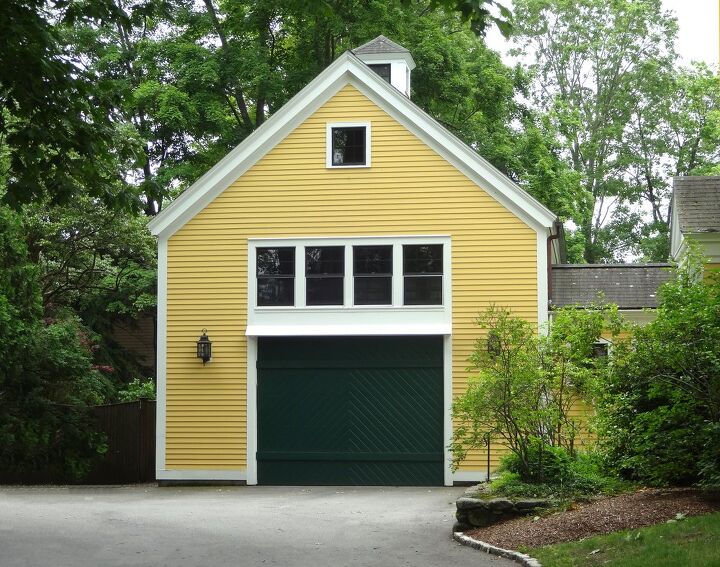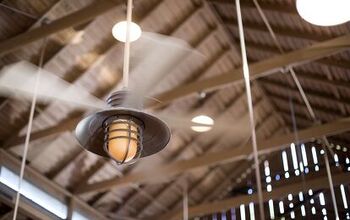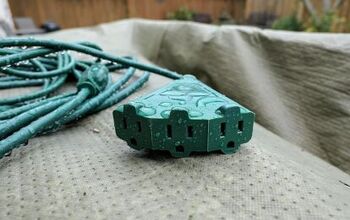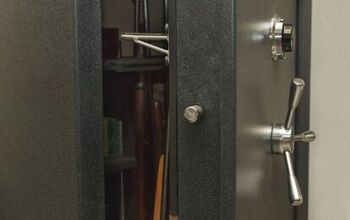Can You Live In A Garage? (Find Out Now!)

A garage can take up a decent portion of your home’s square footage. Typically, people use this space to protect their vehicles or for additional storage. However, you may find yourself wanting to make better use out of this extra room. This begs the question: Can you turn your garage into a permanent living space? We have the answer.
Yes, you can legally live in a garage, but you need to make sure to convert it into a fully livable space that is comfortable and functional. You will also have to review local planning laws in your area and most likely obtain a permit to do this, especially if you plan on renting the room out to guests.
That seems like a long answer, so let’s break down what all that really means. That way, you know exactly how to proceed with this project.
Do you need to remodel your garage?
Get free, zero-commitment quotes from pro contractors near you.

How to Convert a Garage into a Livable Space
The standards for turning your garage into a living space will vary state by state, but there is a general baseline to follow. This baseline is that your garage simply must be finished and have a heating source. Finished garages have drywall covering any beams and gaps.
It doesn’t necessarily need to have insulation or its own electricity, but odds are you’ll want both if you’re converting it into a permanent living space. Before you make any moves, get in touch with local authorities to okay the project. Depending on where you live, they may say you can go ahead, or they may require some paperwork first.
Check Local Laws and Regulations
Depending on where you live, local authorities will either give you the go-ahead or require that you file the proper paperwork before converting your garage. Every state, city, and even small towns are different, so it’s important to double-check before you proceed. Here are some laws you should research before listing your space:
- Local & State Laws
- City Ordinances
- Zoning Laws
- HOA Regulations
Living in Your Own Garage
If you are planning to live in your own garage, you technically still have to follow these guidelines to “legally” do so. That said, there’s not much that authorities can do if you decide to cut a few corners so long as you’re not being disruptive to anyone around you. Even so, you’ll most likely want to do what you can to make your space as comfortable as possible.
Along a similar vein, some people move older family members into their garage spaces, so they can age in place safely and comfortably. This is a situation where it is crucial to make that space as comfortable as possible.
In this case, a garage that fits three cars or more is ideal, so you can install a separate bathroom and kitchenette in that space as well as a common area and bedroom. This way, your loved ones can maintain a sense of independence while still being within a safe distance of family.
Renting Your Space
Whether you’re renting your garage to friends, family, or strangers, having a legally livable space is an absolute necessity. In addition to following all guidelines for converting your space, you will most likely need a separate set of permissions from local authorities to ensure your room meets safety regulations.
How to Make Your Garage a More Comfortable
Even if you can get away with living in your garage as is, there are a lot of projects you can undertake to make it even better suited for long-term use. Here are some places to start, so you can transform your garage into a comfortable living space.
Clean!
A no-brainer. Most old garage floors are going to be pretty dirty, especially if it was once used to store your car, tools, and any other household items. Do a deep clean of the space before moving anything in. This includes the floor, walls, windows, and any hard-to-reach places in the garage. The best way to do this is to remove everything from the garage first. It’s a lot of work, but you’ll truly have a clean slate to create your vision for your space.
Eliminate Dampness
Your garage will typically not be as well insulated from the outside as the rest of your home. Before you move anything in, make sure the walls and floor are not damp. This dampness can come from the earth, rainfall, or leaking pipes.
This dampness make your space uncomfortable and can produce mold. Not only will you be dealing with musty odors, but this mold growth can also ruin clothes and cause respiratory problems over time. See if you can waterproof the outside to get rid of this problem.
Seal Windows and Doors
Another way to prevent moisture from entering your space is to properly seal all the windows and doors in your garage. This will also keep dust, insects, and other particles out. Most importantly, it will provide better insulation, so the interior temperature doesn’t fluctuate as much with the change of the weather. That means you’ll be more comfortable, and your energy bills will be lower, too.
Area Rugs and Carpeting
Garages are already colder than the rest of your home, and a lot of that cold will make the floor very cold, especially the typical concrete ones. One of the best ways to warm up your space and enhance its aesthetic is with carpeting! On the easy end, you can get a large area rug for the space. If the garage is only going to be used as a living space from now on, you can also install actual carpeting.
Furnish Your Space
Finally, it’s time to furnish your new and improved space. This is your chance to really make your space your own with your own furniture and personal aesthetic. You can even consider adding a small bathroom and kitchen to maintain even more independence. This is especially useful in a detached garage.
Attached vs. Detached Garages
Attached garages will typically share the same heating and cooling system as the rest of your home. However, it can still fluctuate as the weather changes without proper insulation, so it’s a good idea to still have either a separate HVAC system in the garage or a garage heater and ceiling fan.
If you have a detached garage, you will benefit from greater privacy and a space that really feels like it is your own. Installing a quality heating and cooling system is crucial when this is the case since the space will not benefit at all from your home’s HVAC system.
Related Questions
How much space will I have in a garage?
There are three standard sizes: single-car, two-car, and three-car garages. Typically, a single-car garage is 12 ft. wide by 22 feet deep. A two-car garage offers more space and is usually 18 ft. wide by 20 ft. deep. A three-car garage is obviously the largest, typically 32 ft. wide by 22 ft deep. These average dimensions vary depending on your specific home.There are also some size stipulations for building a garage on your property.
Will converting my garage into a bedroom add value to my home?
Yes, as long as it is attached to your home. Attached garages that you convert into a habitable space will be included in the overall Gross Living Area (GLA) of your home when you are trying to sell. This covers all rooms in a house that can be lived in.The catch is the room has to be properly converted and must share the main home’s heating. Any detached buildings will not count toward the total square footage of your home.
Do you need to remodel your garage?
Get free, zero-commitment quotes from pro contractors near you.

Final Thoughts
So, the easy answer is you can live in your garage. However, your garage will not be ready to live in without a little work first. Before converting your garage into a living space, check with local authorities to make sure you’ve crossed your t’s and dotted your I’s.
Not only will this keep you out of potential trouble, but it will also guarantee you get the most use out of your space and ensure you stay as comfortable as possible, too. It may seem like a lot of work, but it’s the best way to get the job done!

I am a copywriter and editor based in the Las Vegas area with nearly a decade of experience under my belt writing landing pages, cost guides, blog posts, newsletters, case studies, and social media content. I have a degree in Strategic Communication and experience working in both the account and creative spheres. My goal is to always be discovering new interests and bettering myself as a writer and editor along the way.
More by Kerry Souder



























